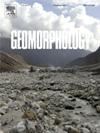哥斯大黎加科多布鲁斯地质景点的盘点与评估,以促进地质旅游
IF 3.1
2区 地球科学
Q2 GEOGRAPHY, PHYSICAL
引用次数: 0
摘要
这项研究构成了一个开创性的地质遗址清单和对哥斯达黎加科托布鲁斯的评估。我们与科托布鲁斯市政府合作,在“一村一品”(以下简称“科托布鲁斯OVOP”)项目框架内,生成了该地区现有地质遗址的基线知识,以支持旅游路线的创建。该项目的口号是“我们是科多布鲁斯,一个天堂,发现我们!”该项目寻求在一个历史上一直依赖畜牧业和农业的地区实现经济增长。该研究揭示了科托布鲁斯的地质多样性,为古地理研究提供了新的视角。一方面,基于地理旅游对采用地理旅游的地方经济社会经济发展的示范作用。另一方面,它有助于该地区的可持续发展目标(SDG)。被确定为地质旅游的主要地质遗址包括El Ángel和Santa Fe等瀑布,Cerro Pelón和Cerro Quijada del Diablo山,以及Aguas Calientes的温泉。此外,在圣维托湿地、La Caverna Barranquilla、Cerros Gemelo和Pittier等生态丰富的遗址中,拉古纳桑乔湖(Laguna Zoncho)作为古生态、古气候学和考古重要性的泻湖脱颖而出。它们为观察鸟类和野生动物提供了独特的机会。最后,该研究建议科托布鲁斯市政府和OVOP科托布鲁斯项目的利益相关者在制定旅游路线时实施地质遗址管理计划,强调社区对保证可持续旅游和地质保护的承诺。本文章由计算机程序翻译,如有差异,请以英文原文为准。
Inventory and assessment of geosites to promote geotourism in Coto Brus, Costa Rica
This study constitutes a pioneering inventory of geosites and an assessment of Coto Brus, Costa Rica. In collaboration with the Municipality of Coto Brus, we generated baseline knowledge of the existing geosites from this area to support the creation of a touristic route, within the framework of the project One Village, One Product (OVOP), hereinafter OVOP Coto Brus. The slogan of the project is “We are Coto Brus, a paradise Discover us!” The project seeks the economic growth in a region that has been historically dependent on cattle and agriculture. The study reveals the geodiversity of Coto Brus, providing a paleogeographic perspective. On the one hand, it is based on the demonstrated role of geotourism for the socioeconomic development of local economies that adopt it. On the other hand, it contributes to the Sustainable Development Goals (SDG) of the region. Key geosites identified for geotourism include waterfalls such as El Ángel and Santa Fe, the hills of Cerro Pelón and Cerro Quijada del Diablo, and the thermal waters of Aguas Calientes. In addition, the Laguna Zoncho stands out as a lagoon with paleoecological, paleoclimatological, and archaeological importance in ecologically rich sites such as the San Vito Wetland, La Caverna Barranquilla, Cerros Gemelo, and Pittier. They constitute unique opportunities for bird and wildlife observation. Finally, the study recommends that the Municipality of Coto Brus and the stakeholders in the OVOP Coto Brus project implement geosite management plans in the formulation of the touristic route, emphasizing the community's commitment to guarantee sustainable tourism and geoconservation.
求助全文
通过发布文献求助,成功后即可免费获取论文全文。
去求助
来源期刊

Geomorphology
地学-地球科学综合
CiteScore
8.00
自引率
10.30%
发文量
309
审稿时长
3.4 months
期刊介绍:
Our journal''s scope includes geomorphic themes of: tectonics and regional structure; glacial processes and landforms; fluvial sequences, Quaternary environmental change and dating; fluvial processes and landforms; mass movement, slopes and periglacial processes; hillslopes and soil erosion; weathering, karst and soils; aeolian processes and landforms, coastal dunes and arid environments; coastal and marine processes, estuaries and lakes; modelling, theoretical and quantitative geomorphology; DEM, GIS and remote sensing methods and applications; hazards, applied and planetary geomorphology; and volcanics.
 求助内容:
求助内容: 应助结果提醒方式:
应助结果提醒方式:


